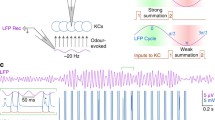Abstract.
Intrinsic oscillators are the basic building blocks of central pattern generators, which model the neural circuits underlying pattern generation. Coupled intrinsic oscillators have been shown to synchronize their oscillatory frequencies and to maintain a characteristic pattern of phase relationships. Recently, oscillatory neurons have also been identified in sensory systems that are involved in decoding phase information. It has been hypothesized that the neural oscillators are part of neural circuits that implement phase-locked loops (PLLs), which are well-known electrical circuits for temporal decoding. Thus, there is evidence that intrinsic neural oscillators participate in both temporal pattern generation and temporal pattern decoding. The present paper investigates the dynamics underlying forced oscillators and forced PLLs, using a single framework, and compares both their stability and sensitivity characteristics. In particular, a method for assessing whether an oscillatory neuron is forced directly or indirectly, as part of a PLL, is developed and applied to published data.
Similar content being viewed by others
Author information
Authors and Affiliations
Additional information
Received: 17 July 2000 / Accepted in revised form: 14 March 2001
Rights and permissions
About this article
Cite this article
Zacksenhouse, M. Sensitivity of basic oscillatory mechanisms for pattern generation and detection. Biol Cybern 85, 301–311 (2001). https://doi.org/10.1007/s004220100259
Issue Date:
DOI: https://doi.org/10.1007/s004220100259




